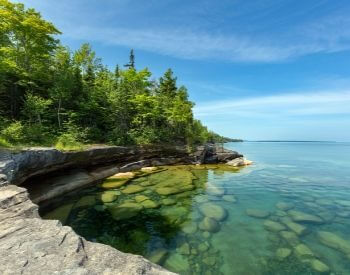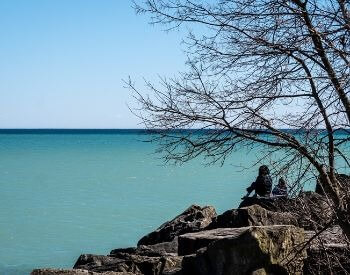
This web page contains Great Lakes facts for kids and is an excellent resource for anyone of any age looking to learn about these massive bodies of freshwater. Our goal is to provide you with accurate, up to date facts about the Great Lakes. In addition to facts about the Great Lakes, we provide additional resources to help you with your research on these huge freshwater lakes.
The Great Lakes facts below will help you learn about the Great Lakes, how big the Great Lakes are, the different Great Lakes, where the Great Lakes are located and other Great Lakes related facts. We hope these Great Lakes facts are interesting and help you learn more about these enormous freshwater bodies.
If any of the below Great Lakes facts are inaccurate, please contact us and let us know.
26 Great Lakes Facts for Kids
- The Great Lakes are group of interconnected lakes in North America.
- The Great Lakes started to form about 14,000 years ago.
- The Great Lakes were created by retreating ice sheets from the last glacial period.
- The Great Lakes are in both the United States of America and Canada.
- The Great Lakes have huge economic value to the Great Lakes region.
- They’re a source of recreational activities, like fishing and boating.
- They’re also a source of commercial value for shipping, drinking water and commercial fishing.
- The Great Lakes contain 21% of the Earth’s surface freshwater.
- Collectively the Great Lakes cover 94,250 square miles and contain 5,439 cubic miles of freshwater.
- The Great Lakes are made up of five different large lakes.
- The five Great Lakes are Lake Superior, Lake Michigan, Lake Huron, Lake Erie and Lake Ontario.
- Lake Superior is the largest of the Great Lakes.
- Lake Superior contains 2,900 cubic miles of water.
- Lake Superior has an average depth of 483 feet and a maximum depth of 1,333 feet.
- Lake Michigan is the second largest of the Great Lakes.
- Lake Michigan contains 1,180 cubic miles of water.
- Lake Michigan has an average depth of 279 feet and a maximum depth of 925 feet.
- Lake Huron is the third largest of the Great Lakes.
- Lake Huron contains 850 cubic miles of water.
- Lake Huron has an average depth of 195 feet and a maximum depth of 748 feet.
- Lake Ontario is the second smallest of the Great Lakes.
- Lake Ontario contains 393 cubic miles of water.
- Lake Ontario has an average depth of 283 feet and a maximum depth of 804 feet.
- Lake Erie is the smallest of the Great Lakes.
- Lake Erie contains 116 cubic miles of water.
- Lake Erie has an average depth of 62 feet and a maximum depth of 210 feet.
Pictures of the Great Lakes






Additional Resources on the Great Lakes
- About the Great Lakes – Find more information about the Great Lakes of North America on the Great Lakes Commission website.
- Facts and Figures about the Great Lakes – Discover some awesome facts and figures about the Great Lakes on the EPA website.
- Great Lakes Ecoregion – Learn about the Great Lakes and their ecosystem on the NOAA website.
- Great Lakes – Britannica – Explore the Great Lakes on the Britannica website.
